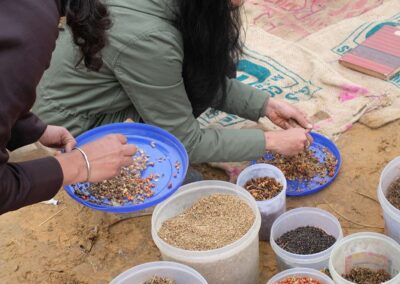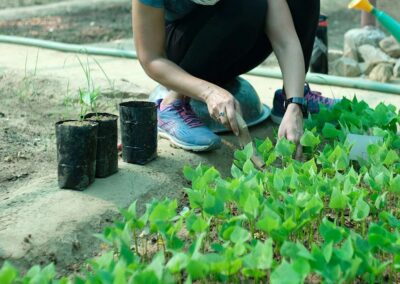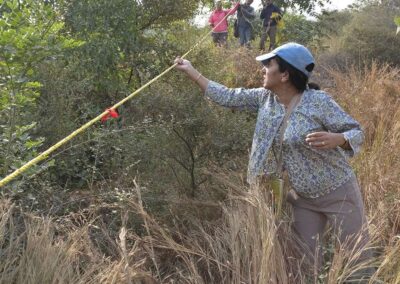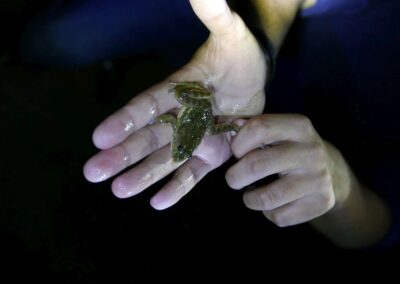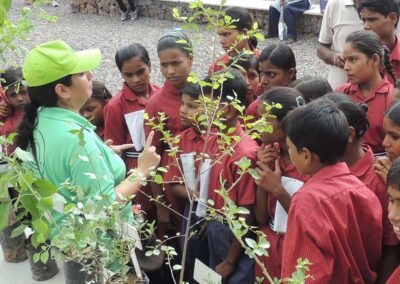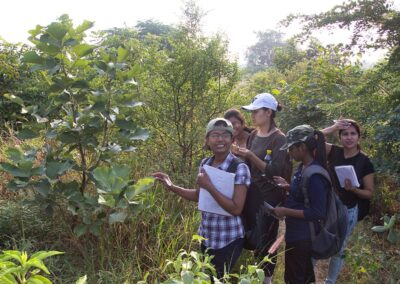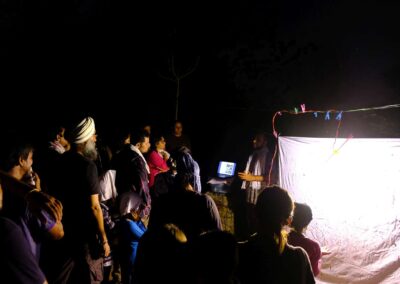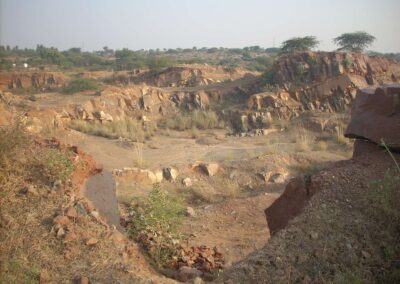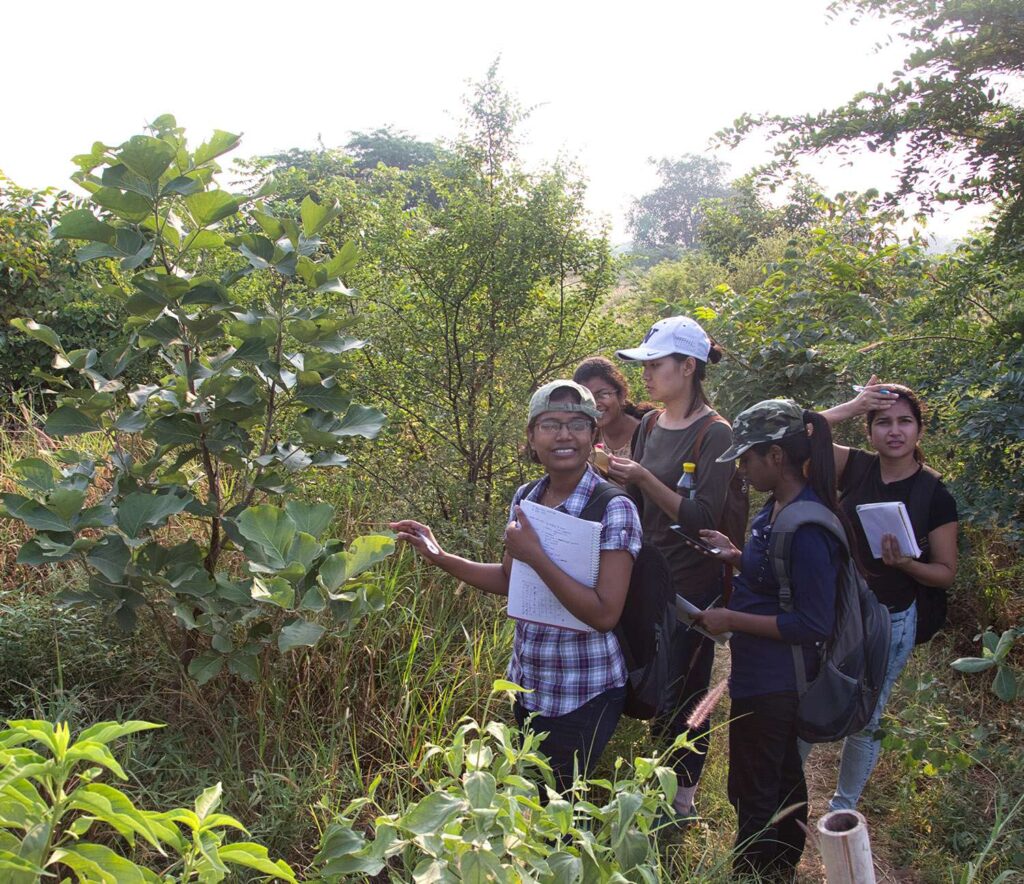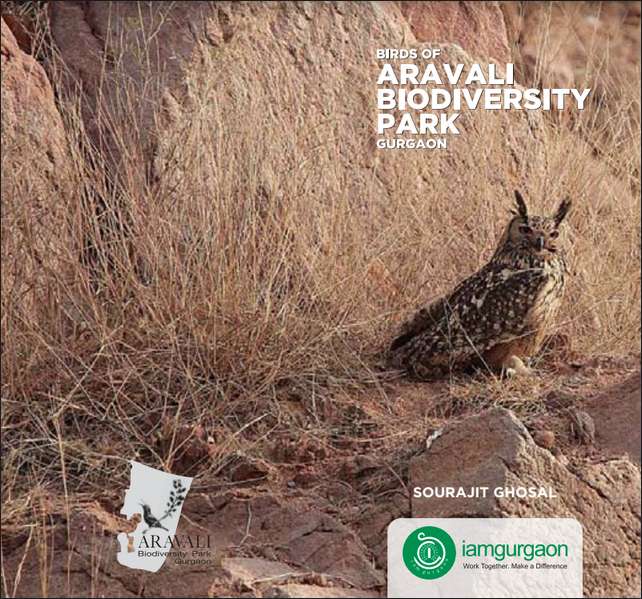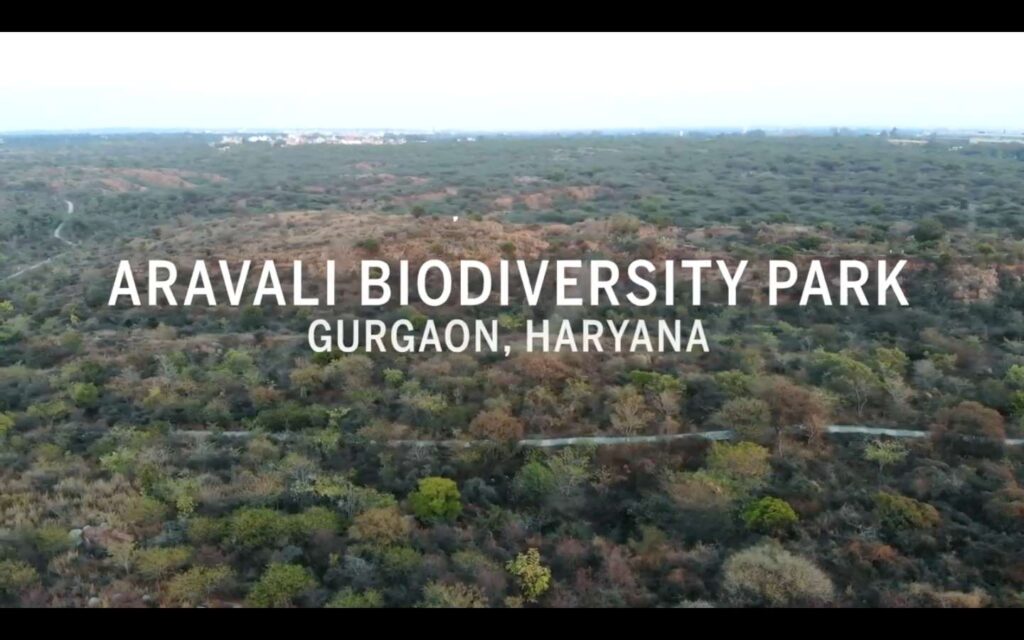The Aravali Biodiversity Park is 392 acres of wilderness carved out of a 40-year-old mining site in the millennium city of Gurugram. It was named as the first OECM (Other Effective area based Conservation Measure) in India under IUCN. The project started with a joint venture between the Municipal Corporation of Gurugram (MCG) and iamgurgaon (IAG). Now, the Park is managed by Hero Motocorp in association with the Rewilders.
The Aravali Biodiversity Park was a part of the Nathupur Village of Gurugram. Located at the Delhi-Gurugram border. This area was extensively mined for over 4 decades for the quartzite stone and Badarpur sand used for construction activities in Delhi-NCR. A large number of small stone quarries were operational in this area. The operation of 8 stone crushers on the Park land along with illegal felling of trees, cattle grazing and waste dumping had caused serious environmental degradation.
The Municipal Corporation of Gurugram ratified the vision of the Park as a City Forest showcasing native forest flora of the Northern Aravali. The ecological restoration work undertaken was guided by this vision and helped integrate ecology, urban environment and human aspirations in the city. In the year 2010, the Park was mostly barren and whatever little vegetation we saw was mainly young vilayati keekar (Prosopis juliflora), an invasive alien species that was colonizing the Park. One also noticed some seasonal herbs and grasses that came up during the monsoon and winter months.
At the start of the restoration work, rootstocks of native plants were identified and given protection. We saw a resurgence of babool (Acacia nilotica), ronjh (Acacia leucopholea), hingot (Balanites roxburghii), kair (Capparis decidua), ghatbor (Fleuggea leucopyrus) and jungli karonda (Carissa spinarum) from these rootstocks. While we protected these native species, we eradicated alien invasives, such as Prosopis juliflora, Lantana camara, Xanthium stumarium, Parthenium hestrophorus and many others.
Over 200 species of native plants (trees, shrubs, herbs, climbers, grasses) were added to the Park with a vision to showcase the forest flora. In the last ten years, the Park has become a favoured habitat for birds (over 201 species recorded) and wild animals (jungle cat, common palm civet, jackal, porcupine, neelgai and various kinds of reptiles) of Gurugram.
The forest community in the Park varies as per the terrain. The steep rocky outcrops are home to salar (Boswellia serrata) and dhok (Anogeissus pendula) forests, gentle outcrops house kumath (Acacia senegal) and khair (Acacia catechu) forests. Dhak (Butea monosperma) forest community on gentle slopes and dry valleys, and distinct forests of kaim (Mitragyna parvifolia) community in the seasonal drainage channels. Then the patches where the soil is deep, you find babool (Acacia nilotica) and jhand (Prosopis cineraria) forests, and seasonal wetlands have khajoor (Phoenix sylvestris) and Saccharum grasslands. Today these forest communities are established and many are recruiting individuals giving us hope that the Park is becoming a self-sustaining forest ecosystem.



